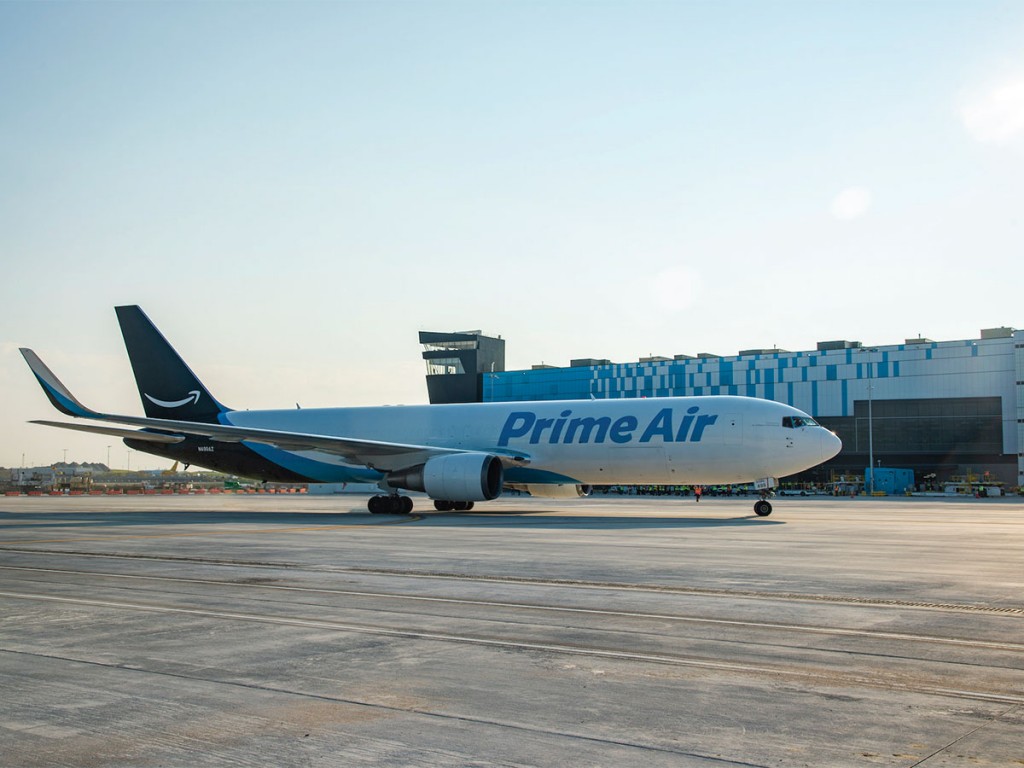With ocean shipping in turmoil, the COVID-19 economy has allowed cargo to become a significantly larger part of airline revenues.
Last year was disastrous for the world’s airlines—revenues dropped by half a trillion dollars, according to the International Air Transport Association (IATA). But those numbers came as a result of the falloff of passenger traffic. Cargo performance actually advanced remarkably during the pandemic.
Cargo “has become a financial bright spot for airlines and the backbone of global supply chains,” said Willie Walsh, IATA’s Director General and CEO.

Boom in Air Freight
Global air cargo demand was up 9.9% during the first half of the year compared to 2019, according to IATA, with North American carriers contributing 60% of that growth. But capacity remained 10.8% below June 2019 levels, and belly capacity was down 38.9% compared to June 2019 due to the ongoing grounding of passenger aircraft. With capacity constrained, the industry-wide cargo load factor was up 7.0%, reaching an all-time high of 53.8%.
UPS has responded to the latest conditions by adding capacity, especially out of Asia. In the first quarter of 2021, the carrier “added 25% more flights and even more in terms of capacity to support outbound Asia demand,” which was up 43% year-over-year, said Brian Newman, UPS’s chief financial officer. In the second quarter, UPS’s international volumes were up 14% year-over-year and international revenues were up 30%, with all major regions showing double-digit growth. The carrier plans on adding six new aircraft to its fleet by the end of this year.
Air Canada has benefitted from enhanced cargo operations, even as passenger aircraft sat idle. Since March 2020, Air Canada has operated over 10,000 scheduled and on-demand all-cargo flights using its Boeing 777 and Airbus A330 passenger aircraft.
Pandemic Impact
“The pandemic changed our business at unprecedented speed,” said Jason Berry, vice president for cargo at Air Canada. The airline is in the process of converting several of its Boeing 767 aircraft into dedicated freighters, and, in June, announced a list of planned routes for October, when they begin to enter into service. Flying primarily out of Toronto, destinations will include Miami, Quito, Lima, Mexico City, and Guadalajara. Cities to be served beginning in early 2022 will include Halifax, St. John’s, Madrid, and Frankfurt.
“These freighters will allow us to continue building on the success of our cargo-only flights,” said Berry, “and are an important part of our future growth.”
With the pandemic upending container ocean shipping, and heavy congestion seen at coastal ports and inland hubs, air cargo has benefitted from a shift from ocean to air, according to Flexport, the San Francisco-based freight forwarder and customs broker. “Chassis shortages, congestion, over-reliance on key gateways, and COVID-19 related disruptions to labor are expected to persist,” a company report said.
Airfreight rate increases have been the result of “the limited space on ocean carrier routes” and the “pressure on logistics companies and shippers to find alternative ways to get items shipped on time,” according to Liz Lasater, CEO of Red Arrow Logistics, a freight forwarder headquartered in Bellevue, Washington. “This results in paying top dollar to get spots on passenger or all-cargo air carriers.”
Rates from China to the United States are up 75% since mid-March, according to the TAC Index, thanks also to a wave of sea-to-air conversations following the blockage of the Suez Canal. Even so, with ocean spot rates through the roof, air cargo rates are still only six times more expensive per kilogram than ocean shipping, half the differential that prevailed before the pandemic. That’s making air cargo more attractive to apparel brands like Levi’s, Tommy Hilfiger, and Calvin Klein, all of which have reported increased reliance on airfreight.
“We had to increase our airfreight,” said Harmit Singh, chief financial officer at Levi Strauss, on a recent conference call, noting also that “we negotiated capacity and that has allowed us to offset some of the increases.” (When does it make sense to switch from ocean to air? See box on top right column)
But the increased demand for airfreight is now constraining capacities at some airports. Flexport reported that ground handlers need two to five days to break down import freight at Los Angeles International Airport and at Chicago O’Hare and that “trucking remains scarce for airport transfers and local pickup and deliveries” at those two airports, as well as at JFK, in New York.
All of these factors likely mean that air cargo will run hot for the rest of 2021, according to Lasater. But airlines still find themselves in a tough spot.
Load Factor versus Debt Factor
“Airlines have taken on a large amount of debt to hold them over until passengers start flying again,” Lasater explained. “The growing cargo business is not enough to offset the entire amount of debt. If demand for air cargo was not as high as it is, the airline industry will be in even more trouble.”
Increased passenger travel would not only alleviate the airlines’ financial woes, but would also add additional belly capacity to carry freight. While some domestic passenger markets are moving in the right direction, international passenger numbers for the first half of the year were disappointing. “The situation for international travel is nowhere near where we need to be,” said Walsh. “June should be the start of peak season, but airlines were carrying just 20% of 2019 levels.”
Longer-term, Walsh said, “global trends are positive,” as he expects the airfreight industry to be buoyed by global trade growth generally and by carrying “high-value specialized cargo, particularly pharmaceuticals and e-commerce.” Nearer term, the situation is fraught with uncertainty, thanks to the mutating virus, which is why some experts don’t expect pre-pandemic belly capacities to be available until 2024, or even 2025.





